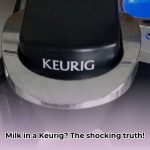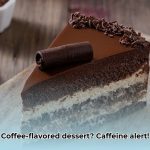Sweet tea: that icy, sugary delight synonymous with summertime in the South. But beneath its sweet facade lies a caffeine kick that might surprise you. This guide dives deep into the world of sweet tea and caffeine, exploring everything from the factors affecting its content to a step-by-step brewing guide. Whether you’re a caffeine enthusiast or prefer to keep it low-key, you’ll find the answers you need right here.
Decoding the Caffeine in Your Sweet Tea
Yes, sweet tea typically does contain caffeine. But unlike coffee, the caffeine levels in sweet tea aren’t always consistent. They dance to the tune of several key factors, making it a more complex beverage than you might think. Let’s unpack these caffeine influencers:
5 Factors Affecting Caffeine Levels in Sweet Tea
-
Tea Type: Black tea, the cornerstone of most sweet teas, generally contains more caffeine than its green or white counterparts. But even within black teas, caffeine content can vary based on the specific variety (e.g., Assam tends to have more caffeine than Darjeeling). Herbal teas are typically caffeine-free.
-
Brewing Time: This one’s intuitive: longer steeping time generally means more caffeine extracted from the leaves. Imagine dipping a tea bag into hot water like dunking a cookie in milk – a quick dip results in a milder flavor (and less caffeine), while a prolonged soak creates a stronger, more caffeinated brew.
-
Water Temperature: Hotter water acts as a more efficient caffeine extractor. While a rolling boil is standard for many brewing methods, using slightly cooler water or even cold-brewing can significantly lower the caffeine content.
-
Tea Quantity: More tea (leaves or bags) equals more caffeine. It’s a simple equation of input and output.
-
Serving Size: A larger glass naturally contains more caffeine than a smaller one, simply due to the increased volume of liquid.
Caffeine Content: How Does Sweet Tea Stack Up?
Let’s compare sweet tea’s caffeine content to other popular beverages:
| Beverage | Approximate Caffeine (mg/8oz) | Notes |
|---|---|---|
| Home-brewed Sweet Tea | 15-47 | Varies significantly based on brewing method and tea type. |
| Restaurant Sweet Tea | 25-70+ | Restaurants often brew stronger tea, leading to higher caffeine levels. |
| Brewed Coffee | 95-200 | Considerably more caffeine than sweet tea. |
| Espresso | 63 | Highly concentrated caffeine in a small serving. |
| Energy Drinks | 70-200+ | Often contain other stimulants, significantly boosting their effects. |
| Cola (Regular) | 20-40 | Some sodas have caffeine levels comparable to weaker sweet tea. |
| Black Tea (unsweetened) | ~48 | Provides a baseline for comparison, as it’s commonly used in sweet tea. |
| Green Tea (unsweetened) | ~28 | Lower in caffeine than black tea, a popular choice for caffeine-sensitive individuals. |
| White Tea (unsweetened) | ~6 | Contains the lowest amount of caffeine among traditional teas. |
As you can see, sweet tea occupies a middle ground in the caffeine spectrum. While it generally has less caffeine than coffee, it can be comparable to some sodas and contains more caffeine than green or white tea. Restaurant sweet tea tends to have higher caffeine levels than home-brewed versions due to stronger brewing practices.
Brewing the Perfect Glass: A Step-by-Step Guide
Ready to become a sweet tea aficionado? Here’s how to brew your own, controlling the caffeine content to your liking:
-
Choose Your Tea: Select your tea type – black, green, white, or decaf black tea. This is your first step in caffeine control.
-
Heat the Water: Bring water to a rolling boil (for standard caffeine levels) or slightly cooler temperatures (for lower caffeine).
-
Steep Strategically: This is the crucial caffeine-control step. Steep for less time (1-2 minutes) for a milder brew, longer (3-5 minutes for a moderate brew, or up to 7-10 for a stronger, more caffeinated tea.)
Steeping Time Estimated Caffeine (8oz serving) 1-2 minutes 10-20mg (Mild) 3-5 minutes 20-40mg (Moderate) 7-10 minutes 30-60mg (Strong) -
Sweeten to Taste: Add sugar or your preferred sweetener while the tea is still hot to ensure it dissolves properly. Note: adding sweetener doesn’t affect the caffeine content.
-
Cool and Serve: Allow the tea to cool, then refrigerate until chilled. Serve over ice and savor.
Decaf Sweet Tea and Caffeine Limits
If you’re avoiding caffeine altogether, decaf black tea can be a suitable option. While not entirely caffeine-free, it contains significantly less than regular black tea. Remember, for most healthy adults, up to 400 milligrams of caffeine per day is generally considered safe, though individual tolerances vary.
Enjoying Sweet Tea Mindfully
By understanding the factors that influence caffeine levels and mastering the brewing process, you can enjoy sweet tea on your terms. Whether you crave a caffeine kick or prefer a gentler lift, a perfectly brewed glass awaits.
- Doctor Work Life Balance: Proven Strategies for Physician Well-being - November 20, 2025
- Find Your Work-Life Harmony: Quotes for a Fulfilling Life - November 18, 2025
- CRNA Work-Life Balance: Strategies for a Healthier Lifestyle - November 16, 2025















